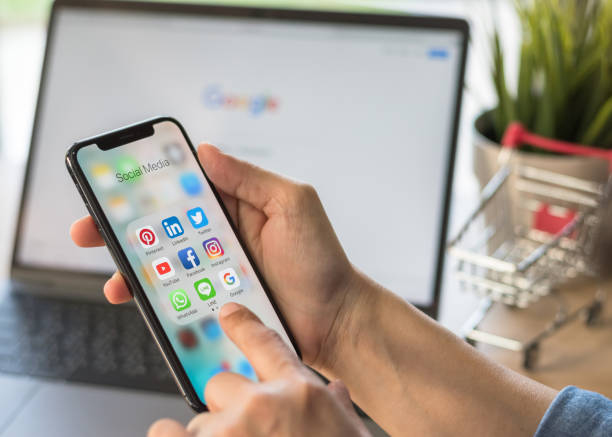Online safety: how to protect children and adolescents from dangers on social networks

Our children have never known a world without technology, without internet and without social networks: have you ever thought about it? For our kids, spending hours in front of a screen is the most natural thing in the world! Precisely for this reason we have often advised you to use technology to help children and young people learn English in a natural way: to watch cartoons , videos or films in English. Are learning opportunities to be exploited as much as possible! To prevent your children from spending too much time in front of a screen, however, you need to set precise rules: we have already talked about them here on our blog, suggesting some technical solutions to keep a supervision on the activities carried out by your children and protect the children. while browsing online.
With older kids, the situation becomes more complicated when they start using social networks or social gaming platforms, which also have internal forums or chats. Today we want to talk to you about how to protect your children from the dangers they may encounter on social networks or playing online.
Social gaming: what dangers do gaming platforms hide for our children?
Social gaming platforms
Our kids love video games and they are not alone: who among us does not have a Playstation, a Nintendo console or an Xbox at home? Each of these platforms connects to the Internet and gives access to chat rooms to make friends with other players, encourage voice interaction or the exchange of private messages, which can lead our children to have inappropriate contacts. Once again, the Parental Control of the individual platforms comes to our aid:
- PlayStation : The platform allows you to set up a “master” account and sub accounts for children. the filter will allow us to limit some actions for our children’s accounts, based on their date of birth: for example, we will be able to prevent them from communicating with other players, from viewing other players’ content and even setting a monthly spending limit.
- Nintendo : This game console gives you the ability to connect to Miiverse, a network for sharing online gaming experiences. The company is very concerned with the safety of children online, so much so that it has created an entire information page for parents, explaining how to set up Parental Controls on Nintendo devices.
- Xbox : Xbox live is the service that allows you to make friends with other players, chat and open a voice connection before or during a game of your chosen game. Also in this case, we suggest you intervene and change the platform settings so that your children cannot accept friend requests and be contacted online.
To these social gaming platforms is added the possibility to play online in live streaming on YouTube Gaming or on Twitch, becoming part of real communities of players of all ages.
In all these cases, it is important to ensure that our children do not accept friendships from people older than themselves or from dubious accounts; that do not share personal information, videos or photos; but above all, we must always carefully set the filters when creating the account, to block access to inappropriate content, such as violent or hateful images within the video games themselves and always check the classification of the video game in based on the rating of Pegi (Pan European Game Information).
YouTube and Twitch, however, are not limited to social gaming: both platforms are used by teenagers to “stream” (as they say in the jargon, from the English word stream, which means stream of content) anything: from live music to make-up tutorials or simply to chat about your life with your followers, as happens on many other social networks. In these cases, the stream often takes place in the privacy of one’s own bedroom and the greatest risk is that of letting complete strangers into one’s home and publicly sharing too much personal information. The same happens with many social networks that allow the sharing of photos and videos.
Social networks: what are the dangers and how to protect children and adolescents.
All social networks have very specific usage policies that set the minimum age of users: in most cases, you must be at least 13 years old to subscribe to the main social networks (and parental consent). Despite this, many social networks are frequented by younger children: it is not uncommon, in fact, that children between the ages of 8 and 10 already have their own social account.
Sharing of personal information
In addition to having private chats where you can exchange photos, videos and messages, many social networks also use the location of the phone; unwittingly, your children may share a lot of personal information with strangers.
Cyberbullying
A worrying and increasingly widespread phenomenon that begins with the use of insults aimed at other children and young people up to a real incitement to hate; often it all starts with jokes that seem harmless and then degenerate into real online attacks against groups or individuals.
Attachment and sexting
One of the most common dangers on social networks is that not everyone is who they say they are: our children could be approached by adults with bad intentions. But it’s not just the “fake teenagers” who need to worry us! Among boys, the practice of sexting is increasingly widespread using Snapchat, that is the habit of exchanging messages with sexually explicit photos or videos. Many of these messages are often re-shared online publicly to make fun of the person who sent them.
The solutions
All social networks and messaging apps have a section dedicated to reporting these problems. Below, we indicate the direct links to the pages on online safety of some of the applications and social platforms most used by children:
- Instagram Help Center
- YouTube Community Guidelines
- Twitch moderation and safety
- Security on TikTok
- Snapchat Security Center
- Security on WhatsApp
As you may have noticed, in our small list we have not included Facebook, because young people less and less use it: in all probability, we parents have an account on this social network, but our children do not. In any case, since WhatsApp and Instagram are owned by Facebook, it is also worth taking a look at the Facebook Safety Center , which includes a range of information on how to check the safety of kids online, ensure their well-being. , avoid sharing intimate images without permission, and prevent online bullying.





